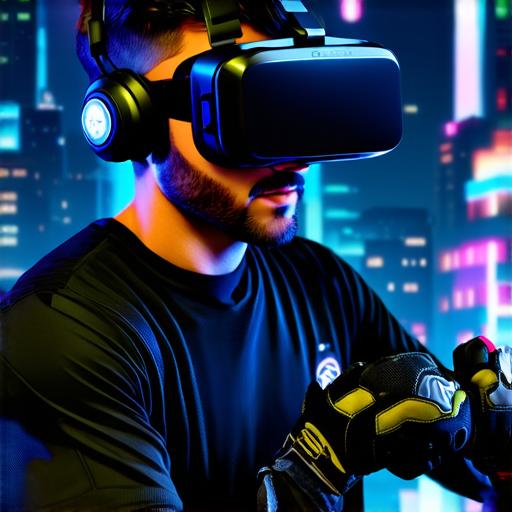
How real can virtual reality feel?
Virtual reality (VR) technology has come a long way in recent years, allowing users to immerse themselves in fully interactive and lifelike digital environments. However, despite the advancements made in VR hardware and software, some people still wonder how realistic virtual experiences can truly feel.

The Realism Factor: Immersive Environments and Interactions
One of the key elements that make VR experiences feel so realistic is the immersive nature of the environments in which users find themselves. By surrounding users with a 360-degree view of their digital surroundings, VR technology allows them to feel as though they are truly inhabiting a different world. This sense of immersion is further enhanced by the inclusion of haptic feedback, which simulates real-world physical sensations such as touch and vibration.
In addition to immersive environments, VR experiences also benefit from highly interactive and engaging content. By providing users with intuitive control systems and allowing them to interact with virtual objects and characters in meaningful ways, VR technology can create a sense of agency that makes the virtual world feel more real. This level of interaction is further facilitated by advancements in AI and machine learning, which enable virtual environments to react more naturally and unpredictably to user actions.
The Limits of Realism: Boundaries and Limitations
While VR technology has made significant strides in creating immersive and interactive digital experiences, there are still certain limitations that can impact the realism of these experiences. For example, users may experience motion sickness or disorientation when using VR headsets, particularly if they have a history of motion-related issues. Additionally, some people may find that the artificial nature of virtual environments detracts from their overall sense of immersion.
Another potential limitation of VR technology is its inability to replicate certain aspects of real-world experiences. For example, while VR can simulate physical sensations such as touch and vibration, it cannot provide users with the full range of tactile feedback that they would experience in the real world. Similarly, while AI has made significant advancements in recent years, it is still limited by its ability to understand and respond to complex human emotions and behaviors.
Case Studies: Real-Life Examples of Immersive VR Experiences
Despite the limitations of VR technology, there are many real-life examples of immersive and convincing virtual experiences that demonstrate the potential for VR to transport users into incredibly realistic digital worlds. One such example is the use of VR in medical training, where students can practice surgical procedures in a safe and controlled environment. By providing a highly immersive and interactive experience, VR technology allows medical students to develop their skills and confidence in a way that traditional training methods cannot match.
Another example of immersive VR experiences is the use of virtual reality in the real estate industry. By allowing potential buyers and renters to explore properties in a fully interactive and realistic environment, VR technology can provide valuable insights into the suitability of a particular space for a given user’s needs. This level of immersion and interactivity can be particularly useful for users who are unable to physically visit the property before making a decision.
The Future of Virtual Reality: Continued Advancements and Innovations
As VR technology continues to evolve, we can expect to see even more immersive and interactive experiences that push the boundaries of what is possible in virtual reality. This may include advancements in haptic feedback technology, which could provide users with a more realistic sense of touch and movement.


